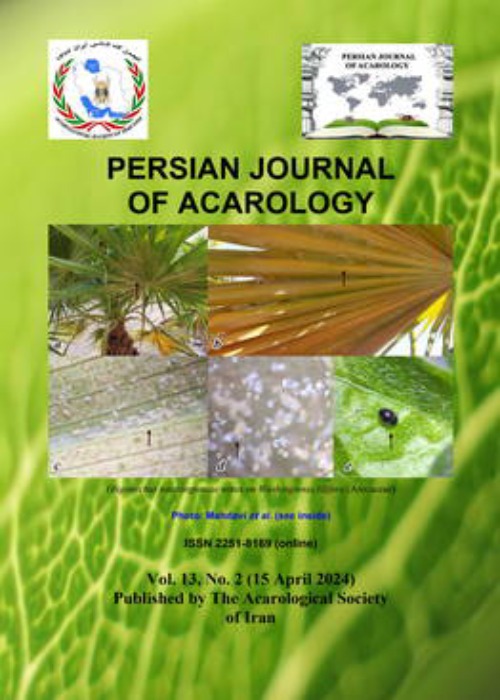Life table of Rhizoglyphus robini (Acari: Acaridae) on saffron corms infected with Fusarium oxysporum (Fungi: Nectriaceae)
The bulb mite, Rhizoglyphus robini Claparédè has been identified as a common pest attacking saffron corms. This mite is also a saprophytic species that is able to feed on fungi (mycelium). It has also been demonstrated that some soil-born fungi can attack and establish on saffron corms. After related fungi were isolated and identified either in saffron corms and mite bodies, the fungus Fusarium oxysporum Schlecht was the most abundant species in both samples; subsequently, it was used in the experiments. For studying the role of soil-borne fungi on life-table parameters of the mite, an even-aged cohort of eggs was obtained and transferred to experimental units to feed on saffron corm sections in two groups (fungal-infected and non-infected corms) in laboratory conditions. A total of 36 individuals were used for each treatment. The life-history data were analyzed according to the age-stage, two-sex life table model. Results showed that total pre-adult development of R. robini was significantly faster on Fusarium-infected rather than healthy corms (10.91 and 11.48 days respectively, P < 0.05). Adult pre-oviposition period (APOP) was significantly shorter when females were reared on fungal-infested than non-infested corms (1.84 and 2.88 days, respectively, P < 0.05). In addition, survivorship and fecundity of the mite on the two diets indicated higher rates and consequently, the net reproductive rate (R0) and intrinsic rate of increase (r) were significantly higher (P < 0.05 for both parameters) (202.07 and 351.13 offspring for R0 and 0.218 and 0.251 day−1 for r respectively on non-infested and infested diets). According to the results obtained, the soil-borne fungus affected demographic parameters of the bulb mite and it supports the hypothesis that the mite prefers plant tissues infected with soil-borne fungi because these are more suitable hosts.
Astigmata , bulb mite , Crocus sativus , demography , Fungi
- حق عضویت دریافتی صرف حمایت از نشریات عضو و نگهداری، تکمیل و توسعه مگیران میشود.
- پرداخت حق اشتراک و دانلود مقالات اجازه بازنشر آن در سایر رسانههای چاپی و دیجیتال را به کاربر نمیدهد.


